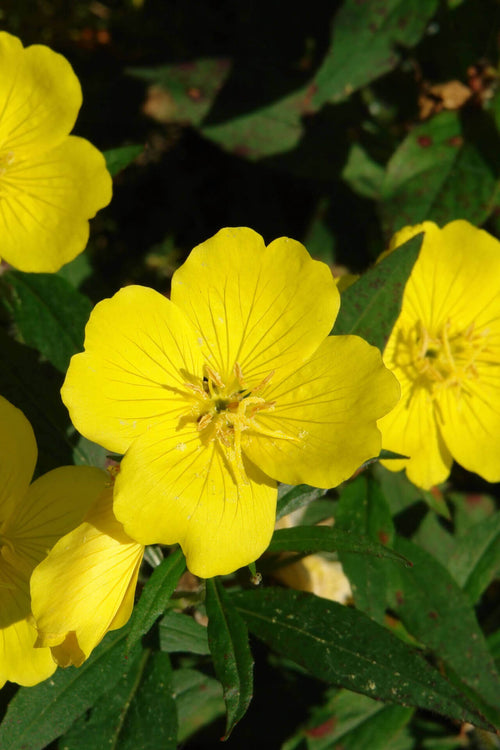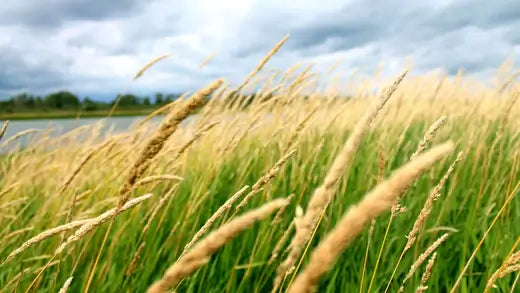Flowers that bloom exclusively at night during autumn possess an enchanting allure, casting a mystical and romantic spell upon the landscape.
While there may not be an extensive list of nocturnal autumn flowers, those that exist are genuinely captivating. This essay will explore some of these fascinating blooms, their unique characteristics, and their cultural significance.
Moonflower (Ipomoea alba): Moonflowers are perhaps the most iconic night-blooming flowers in the autumn. These large, trumpet-shaped blossoms open at dusk and remain open throughout the night, exuding a sweet, intoxicating fragrance. Moonflowers belong to the same family as morning glories, and they share the same rapid growth and heart-shaped leaves.
However, their distinct feature is pure white petals, which glow in the moonlight, lending them their name. Moonflowers are often associated with love, romance, and mystery. Their fleeting beauty and captivating scent make them a favorite in gardens and as decorations for nighttime events and parties. In some cultures, moonflowers are considered symbols of serenity and tranquility.
Four O'Clocks (Mirabilis jalapa): Four O'Clocks are another intriguing autumn night-blooming flower. These delicate, trumpet-shaped blossoms come in various colors, including pink, red, yellow, and white. Their name is derived from their unique habit of opening their flowers in the late afternoon or early evening, typically around 4 o'clock and remaining open throughout the night. They are known for their pleasant fragrance, which intensifies at night.
These flowers have a rich history and are often associated with various meanings. In some cultures, they symbolize change and transformation as they undergo a fascinating color-changing process during their bloom cycle. Four O'Clocks are also believed to bring good luck and are sometimes used in herbal medicine for their purported healing properties.
Night-Blooming Cereus (Selenicereus spp.): Night-Blooming Cereus is a unique and rare cactus plant known for its spectacular nocturnal blossoms. These large, fragrant flowers open only at night, typically during the late summer and early autumn months. The appearance of these blooms is nothing short of magical, with intricate petals and a sweet, enchanting scent.
Night-blooming Cereus is unique in many cultures due to its infrequent and ephemeral flowering. In some traditions, it is associated with secrets and hidden truths, as its blooms are revealed only in the darkness of night. Some even believe these flowers bring good luck and protection against negative energies.
Evening Primrose (Oenothera biennis): Evening primrose is a lovely wildflower known to bloom during the evening and night, particularly in the autumn. These delicate, pale yellow blossoms have four heart-shaped petals and are often found along roadsides and open fields. Their sweet fragrance attracts moths, which are their primary pollinators.
Evening primroses have a long history of medicinal use. They are known for their oil-rich seeds used in herbal remedies and dietary supplements. In Native American cultures, these flowers have traditionally been used for healing properties and as a food source.
Nicotiana (Nicotiana spp.): Nicotiana, commonly known as flowering tobacco, is a group of fragrant night-blooming plants. These flowers come in various species and colors, including white, pink, and red. They are known for their intoxicating scent, which becomes more pronounced as the evening falls. Nicotiana blooms from late summer into the autumn season. These flowers have a fascinating history and cultural significance. While they are not typically used for smoking, as the name might suggest, they are admired for their ornamental value and sweet aroma.
Nicotiana is associated with transformation and change in some cultures, as it opens and reveals its beauty under the cover of darkness.
In addition to these specific night-blooming flowers, many other autumn blooms may open day and night, depending on environmental conditions and light levels.
However, the ones mentioned above have a particular affinity for nightfall, captivating the senses and imagination with their unique beauty and fragrance. Night-blooming flowers in autumn can be attributed to various ecological and evolutionary factors.
Many of these flowers have evolved to open their blossoms at night to attract nocturnal pollinators such as moths and bats. By doing so, they increase their chances of successful pollination, ensuring the continuation of their species.
Furthermore, the nocturnal blooming of these flowers often coincides with cooler temperatures and higher humidity levels, which can help conserve water and reduce the risk of wilting. This adaptation allows them to thrive in the changing climatic conditions of autumn, ensuring their survival and reproduction.
Culturally, these night-blooming autumn flowers have held a special place in human history for centuries. Their temporary and mysterious nature has inspired worldwide myths, legends, and cultural traditions. Here are many examples of the cultural significance of these blooms:
- Symbolism and Rituals: In various cultures, night-blooming flowers are seen as symbols of mystery, transformation, and the hidden beauty that can only be revealed in the darkness. They are often associated with rituals and ceremonies that celebrate change and transition.
- Love and Romance: The enchanting fragrance and delicate beauty of night-blooming flowers make them popular symbols of love and romance. They are often used in weddings, love spells, and romantic gestures to convey deep emotions and desires.
- Healing and Herbal Medicine: Some of these flowers, like evening primrose and Nicotiana, have been used in traditional herbal medicine for their healing properties. They are believed to have therapeutic benefits and are used in remedies for various ailments.
- Protection and Luck: Night-blooming flowers, particularly the rare and elusive ones like the Night-Blooming Cereus, are sometimes considered symbols of protection and good luck. People may cultivate them in their gardens or homes to ward off negative energies and bring positive vibes.
- Literary and Artistic Inspiration: Night-blooming flowers have inspired countless poets, artists, and writers. Their beauty, mystery, and ephemeral nature have been captured in literature, paintings, and other forms of artistic expression.
Conclusion
Night-blooming flowers in autumn are a captivating aspect of the natural world. While they may not be as numerous as their daytime counterparts, their rarity and unique qualities make them all the more fascinating. From the alluring moonflower to the delicate evening primrose, these blooms have significantly influenced cultural traditions, rituals, and artistic expression. Their nocturnal beauty reminds us of the wonder and magic that can be found in the natural world, even in the darkness of autumn nights.


















































